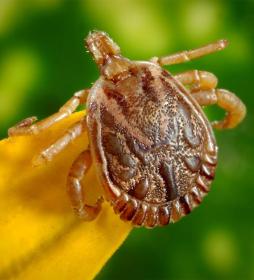- Managing your Practice
-
- Your Benefits
-

Introducing the ultimate Club MD experience
From work to play, and everything in between, we provide you with access to hundreds of deals from recognizable, best-in-class brands, elevating every facet of your life – from practice supports to entertainment, restaurants, electronics, travel, health and wellness, and more. Your Club MD membership ensures that these deals are exclusive to you, eliminating the need to search or negotiate.
Welcome to the ultimate Club MD experience. Your membership, your choices, your journey.
-
- Advocacy & Policy
-
- Collaboration
- News & Events
-

Stay Informed
Stay up to date with important information that impacts the profession and your practice. Doctors of BC provides a range of newsletters that target areas of interest to you.
Subscribe to the President's Letter
Subscribe to Newsletters
-
- About Us
-

Tick Talk: Knowing BC’s high-risk areas can keep you safe
May 31, 2022
Together for Health
With the summer months also comes the season to be extra mindful of ticks and tick-borne illnesses, especially the most common Lyme disease, which can affect individuals of any age and can lead to serious health issues.
What are ticks?
A tick is a small, dark, spider like bug most commonly found in tall grasses and wooded and forested areas – though they can also be found in urban settings. They latch on to people as they pass by and burrow partway into the skin.
Where are BC’s high-risk areas?
New this year, the BC Centre for Disease Control (BCCDC) has launched an interactive map that helps people assess their risk of being bitten by showing where in BC the risk of Lyme disease is highest. Users simply enter their address and find out if they are in a high-risk area for encountering an infected insect.
What is Lyme disease?
Lyme disease is a bacterial infection transmitted through a tick bite. If caught early, Lyme disease is easily treated with antibiotics. But if symptoms are left untreated, it becomes an increasingly complex disease to diagnose and treat. Symptoms include a rash, fever, chills, fatigue, body aches, headache, neck stiffness, and swollen lymph nodes – all of which can mimic other diseases and can lead to nerve tissue damage, neurological problems, or heart issues.
These multiple symptoms can also result in mistaken diagnoses including meningitis, arthritis, stroke, heart disease, Bell’s palsy, and multiple sclerosis. In the last five years alone, the number of reported cases of Lyme disease in Canada has increased dramatically from 992 cases in 2016 to 2,851 cases in 2021. However, it’s believed many cases go undetected or unreported meaning the number of actual cases is likely much higher.
What to look out for?
One of the most common early signs of Lyme disease is an expanding skin rash that looks like a bull’s eye or a target. If this or any other symptoms appear within 3-30 days after being bitten by a tick, consult your family doctor or other healthcare professional.
How to protect yourself from ticks
The best defense against contracting Lyme disease – or any other tick-borne illness – is to protect yourself, so here are some steps you can take:
- When in parks and wooded areas, wear a Health Canada-approved insect repellent containing DEET on exposed skin or clothing
- At home, keep ticks away by keeping grass mowed, removing brush and fallen leaves, cleaning up areas under bird feeders to ward off small mammals that can carry ticks, and keep woodpiles dry and away from the house
- Do a full body check when you get home — especially toes, knees, groin, armpits, and scalp — and check your pets, too
- Stay on trails when hiking in the woods or walking in areas of long grass
- Wear long pants tucked into socks or boots, long sleeves, and light colours to make it easier to spot ticks
How to remove a tick
If you do find a tick on yourself or someone else:
- Remove it as quickly as possible — the risk of Lyme disease increases with the length of time it’s attached
- Use tweezers or a “tick key” to grasp the tick’s head as close to the skin as possible and pull slowly and gently, without twisting, until it comes out
- Once the tick has been removed, clean the bite area with soap and water, then apply an antiseptic cream. Wash hands with soap and water or use alcohol-based hand rub
If you have been bitten by a tick or were in a high risk area and are suffering from a rash, fever, headache, fatigue, muscle paralysis or joint pain, see a health-care provider immediately. Also if you are able to remove the tick in full, you can submit a photo to eTick for identification since there are only two types of ticks in BC that actually carry Lyme disease.
For more information on Lyme disease or how to properly remove a tick, visit the BC Centre for Disease Control and the BC Government’s Ticks in British Columbia page.




